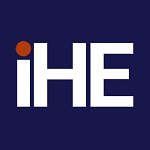No 2022:2: Diagnosed but not treated: How to improve patient access to advanced NSCLC treatment in Europe
Thomas Hofmarcher, Peter Lindgren and Nils Wilking
Additional contact information
Thomas Hofmarcher: IHE - The Swedish Institute for Health Economics
Peter Lindgren: IHE - The Swedish Institute for Health Economics
Nils Wilking: IHE - The Swedish Institute for Health Economics
Abstract: Drug treatment options in advanced non-small cell lung cancer (NSCLC) have multiplied in recent years. 20 new cancer drugs – most of them targeted therapy and immunotherapy – were approved by the European Medicines Agency (EMA) between 2011 and 2020. Measuring if eligible patients have access to drug treatment – both established treatment options as well as newer treatment options – is vital to assess quality in cancer care.
The first part of the report challenges the notion that every diagnosed patient with advanced NSCLC will also get clinically recommended drug treatment. To this end, the report calculates drug treatment rates. Drug treatment rates indicate the proportion (%) of potentially eligible patients with advanced NSCLC who get treated with cancer drugs.
Many patients – across a sample of 12 countries in Europe – remain untreated despite being diagnosed.
Belgium, Greece, Norway, and Portugal had the highest treatment rates of around 70–75% in 2019. Treating around 75% of all potentially eligible patients with advanced NSCLC with cancer drugs is more or less what European clinical guidelines (ESMO – European Society for Medical Oncology) recommend. Poland and the UK had the lowest treatment rates of around 40% in 2019.
Those patients who receive drug treatment often receive outdated treatment options. Underuse of both targeted therapy and immunotherapy was common. This was independent of whether a country had a high or low overall treatment rate.
The second part of the report tries to find explanations for the observed drug treatment rates.
Barriers to achieving high drug treatment rates include late diagnosis, delays in time from diagnosis to treatment, narrow eligibility criteria for receiving drug treatment, and treatment refusal by patients.
Barriers to using modern drug treatment options include delays in reimbursement of modern drugs, limited public drug budgets, limited resources for diagnostic testing, limited continuing medical education.
Recommendations for improving drug treatment in advanced NSCLC
Countries need to start measuring patient access to cancer drugs through a treatment rate-metric. Using patient-level data from national cancer registries would be desirable. As an alternative, insurance claims data from national health insurance funds could be used.
The spotlight needs to be put on patients who for some reason do not receive treatment despite being diagnosed. Analyzing the kind of treatment received of those who do receive treatment would need to be the second step.
Low treatment rates could mainly be improved by earlier diagnosis, by faster time to treatment upon diagnosis, by broadening and harmonizing the clinical eligibility criteria to receive drug treatment, and by convincing patients of the benefits of receiving (modern) drug treatment.
The use of outdated treatment options could mainly be improved by faster local reimbursement of new drugs which are recommended as standard-of-care, by higher public drug budgets, by greater resources to improve testing capacity, and by ensuring continuing medical education.
Keywords: lung cancer; NSCLC; diagnosis; drugs; medicines; Europe; health economics; hälsoekonomi
Language: English
148 pages, 2022
Full text files
IHE-Report-2022_2_.pdfFull text
Questions (including download problems) about the papers in this series should be directed to Annette Persson Dietmann ()
Report other problems with accessing this service to Sune Karlsson ().
RePEc:hhs:ihewps:2022_002This page generated on 2024-09-13 22:15:23.

